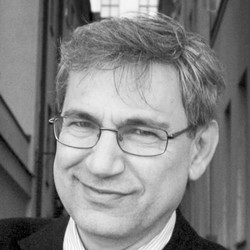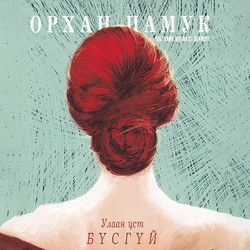
Orhan
Pamuk
He started writing regularly in 1974.[12] His first novel, Karanlık ve Işık (Darkness and Light) was a co-winner of the 1979 Milliyet Press Novel Contest (Mehmet Eroğlu was the other winner). This novel was published with the title Cevdet Bey ve Oğulları (Mr. Cevdet and His Sons) in 1982, and won the Orhan Kemal Novel Prize in 1983. It tells the story of three generations of a wealthy Istanbul family living in Nişantaşı, the district of Istanbul where Pamuk grew up. Pamuk won a number of critical prizes for his early work, including the 1984 Madarali Novel Prize for his second novel Sessiz Ev (Silent House) and the 1991 Prix de la Découverte Européenne for the French translation of this novel. His historical novel Beyaz Kale (The White Castle), published in Turkish in 1985, won the 1990 Independent Award for Foreign Fiction and extended his reputation abroad. On 19 May 1991, The New York Times Book Review stated, "A new star has risen in the east—Orhan Pamuk."[13] He started experimenting with postmodern techniques in his novels, a change from the strict naturalism of his early works. Popular success took a bit longer to come to Pamuk, but his 1990 novel Kara Kitap (The Black Book) became one of the most controversial and popular books in Turkish literature, due to its complexity and richness. In 1992, he wrote the screenplay for the movie Gizli Yüz (Secret Face), based on Kara Kitap and directed by a prominent Turkish director, Ömer Kavur. Pamuk's fifth novel Yeni Hayat (New Life) caused a sensation in Turkey upon its 1994 publication and became the fastest-selling book in Turkish history. By this time, Pamuk had also become a high-profile figure in Turkey, due to his support for Kurdish political rights. In 1995, Pamuk was among a group of authors tried for writing essays that criticized Turkey's treatment of the Kurds. In 1999, Pamuk published his book of essays Öteki Renkler (Other Colors). In 2019, the 66-year-old Nobel Laureate held an exhibit spotlighting an array of photos of Istanbul taken from his own balcony, named "Balkon: Photos by Orhan Pamuk". The exhibition consists of pictures of "subtle and ever-changing view of Istanbul" taken by Pamuk from his balcony in late 2012 and early 2013, said Yapı Kredi Culture and Arts Publishing. Curated by Gerhard Steidl, the German publisher of his photo book Balkon, the exhibit runs through 27 April at the Yapı Kredi Culture and Arts building on Istanbul's teeming Istiklal Street. The exhibit features more than 600 photos selected from over 8,500 taken by Pamuk using a telephoto lens over a five-month period, "a period of intense creativity," according to the statement.[14]
Та нэвтэрч орно уу!
